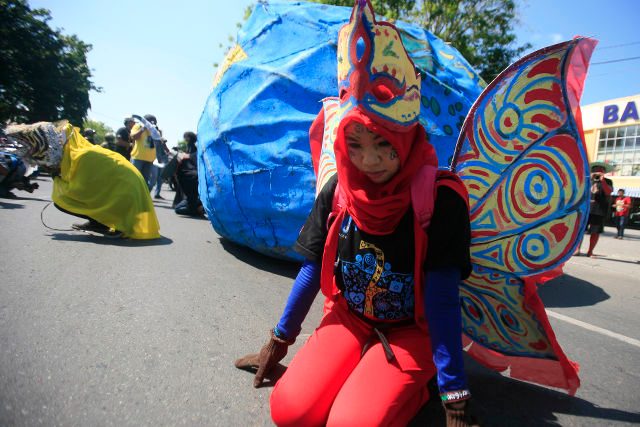SUMMARY
This is AI generated summarization, which may have errors. For context, always refer to the full article.

WASHINGTON, DC, USA – The world is getting warmer, as greenhouse gases reach historic highs and Arctic sea ice melts, making 2013 one of the hottest years on record, international scientists said Thursday, July 17.
The annual State of the Climate report 2013 is a review of scientific data and weather events over the past year, compiled by 425 scientists from 57 countries.
The report looks at essential climate variables, much like a doctor checks a person’s vital signs at an annual checkup, said Tom Karl, director of the National Oceanic and Atmospheric Administration’s National Climatic Data Center.
While Karl declined to give a diagnosis for the planet, he said the report shows some surprises but an ongoing trend that continues the warming pattern seen in recent decades.
“If we want to do an analogy to human health, if we are looking at our weight gain and we are trying to maintain an ideal weight, we are continuing to see ourselves put on more weight from year to year,” Karl told reporters.
“The planet – its state of the climate – is changing more rapidly in today’s world than in any time in modern civilization.”
Global temperatures were among the warmest on record worldwide, with 4 major datasets showing 2013 ranked between second and sixth for all-time heat, the report found.
“Australia observed its warmest year on record, while Argentina had its second warmest and New Zealand its third warmest,” said the report.
Sea surface temperatures also rose, making last year among the 10 warmest on record.
The Arctic-Antarctic conundrum
The Arctic marked its seventh warmest year since records began in the early 1900s.
Arctic sea ice cover was the sixth lowest since satellite observations began in 1979.
Meanwhile, Antarctic sea ice has been increasing – particularly at the end of winter when it is at its maximum – about 1% to 2% growth per decade.
“This is a conundrum as to why the Arctic ice cover is behaving differently than the Antarctic,” said James Renwick, associate professor in the school of geography at Victoria University of Wellington, New Zealand.
“We love questions like this because it creates more important research questions that need to be addressed.”
Renwick said the growth relates to sea ice in Antarctica, not the glacial ice mass on the continent, which was the subject of recent studies finding that the loss of ice in the Western Antarctic may be unstoppable.
New records
Meanwhile, methane, carbon dioxide and other greenhouse gases that come from burning fossils fuels “continued to rise during 2013, once again reaching historic high values,” said the report.
For the first time, the daily concentration of C02 in the atmosphere exceeded 400 parts per million (ppm), as measured by the Mauna Loa Observatory in Hawaii, a year after observational sites in the Arctic observed C02 at 400 ppm in spring 2012.
On average, global sea levels also rose, keeping pace with a trend of adding about three millimeters per year over the past two decades, it said.
“In 2013, global average sea level reached a new record high,” said Jessica Blunden, climatologist at NOAA’s National Climatic Data Center.
“It was one and a half inches (3.81 centimeters) higher than the 1993 to 2010 average.”
The report is published in the peer-reviewed Bulletin of the American Meterological Society. – Rappler.com
Add a comment
How does this make you feel?
There are no comments yet. Add your comment to start the conversation.